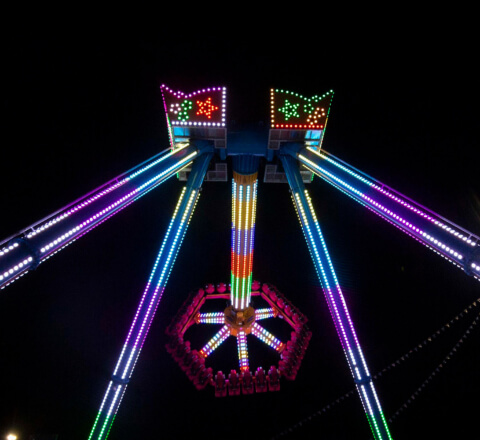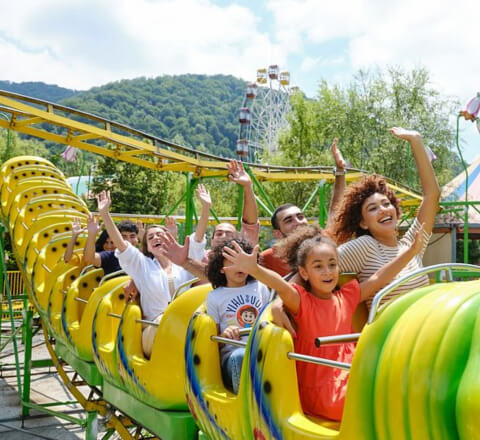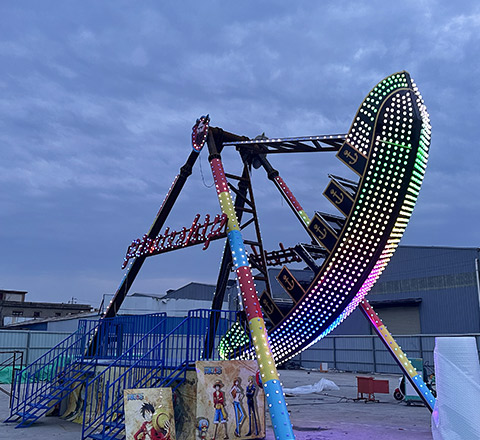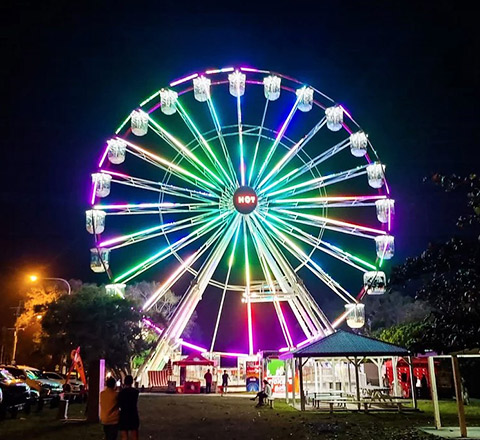Drop tower rides are among the most iconic thrill rides in modern amusement parks. Watching the gondola climb to the top of a towering steel structure, the tension builds with every metre. From the ground, the sight is both fascinating and intimidating. For thrill-seekers, however, amusement park drop towers are simply irresistible.
So, how do drop tower rides work? And why have they continued to attract millions of riders worldwide? Let’s explore their structure, ride cycle, safety systems, and technological evolution.
The Basic Structure of a Drop Tower
At first glance, a drop tower (also called a Free Fall Tower) looks like a tall mast with seats. In reality, its design is highly engineered to combine thrill, safety, and reliability.
Key Components of Freefall Drop Tower Ride:
- Tower – A vertical steel structure ranging from several dozen metres to over 100 metres tall.
- Gondola/Platform – The passenger unit fitted with seats and safety restraints, moving vertically along the tower. Each seat includes over-the-shoulder harnesses or lap bars, with secondary backup systems.
- Hoisting Mechanism – The gondola is lifted using cable-and-winch systems, rack-and-pinion gears, or hydraulic/pneumatic cylinders.
- Release & Braking System – At the top, the gondola is released to free-fall under gravity. Near the bottom, eddy-current magnetic brakes or hydraulic buffers bring it to a smooth stop.
- Control & Sensors – Automated sensors continuously monitor restraints, gondola position, and speed, ensuring every cycle is safe.
As a drop tower rides manufacturer, Carnee Rides knows that every detail—from steel thickness to control software—impacts both performance and safety.
How the Mechanics Create the Thrill
Each ride follows a sequence carefully designed to heighten anticipation and maximize thrill:
- Ascent – The gondola is lifted steadily or at surprising speed.
- Pause at the Top – Riders are held briefly at height, increasing suspense and allowing safety confirmation.
- Freefall – The gondola is released, entering true freefall driven only by gravity.
- Magnetic Braking – As the gondola passes conductive fins, eddy currents create resistance proportional to speed, slowing it smoothly.
- Return to Platform – The gondola lowers gently back for unloading.
Because magnetic brakes require no external power, they remain fully effective even during a power outage—an essential fail-safe design.
Safety Systems and Standards
It’s common for new riders to wonder: Are drop tower rides safe? In fact, they are among the safest thrill rides in any park when maintained properly.
These rides are designed under strict drop tower safety standards, such as ASTM F2291 (USA) и EN 13814 (Европа).
Core Safety Features:
- Redundant Restraints – Over-the-shoulder harnesses plus safety belts.
- Automated Monitoring – Sensors verify every seat lock and safety-critical component before each ride.
- Redundant Braking – Magnetic brakes and hydraulic buffers ensure multiple layers of protection.
- Routine Inspections – Daily checks, scheduled overhauls, and annual audits maintain reliability.
At Carnee Rides, every tower undergoes load testing and system validation before delivery, ensuring compliance with global amusement ride safety standards.
Evolution & Customization
Drop towers have advanced dramatically since the 1980s:
- Early Models – Relied on mechanical brakes and basic lap restraints.
- Modern Designs – Use computerized control, eddy-current brakes, and ergonomic seating.
- Innovations – Rotating gondolas, tilting seats, and themed enclosures create unique drop tower ride experiences.
Today, customization is key. Operators can choose different heights, seating capacities, and themes, turning drop towers into signature amusement park drop rides.
If you are an investor or park operator, visit our Drop Tower Rides for Sale page to explore models and customization options.
Fun Facts & Misconceptions
- Myth: Drop towers push riders down with motors or springs.
Fact: The descent is powered purely by gravity. Some designs may add a slight push, but freefall is the core mechanism. - World Record: The tallest drop tower currently is the Orlando FreeFall, at 430 ft (131 m).
- Tip for First-Timers: Relax during the fall—it makes the experience smoother and more enjoyable.
FAQs
1. Do drop towers push riders downward?
No. The drop is created by gravity alone. Some rides may add a minor assist, but freefall is the main force.
2. Are magnetic brakes safe?
Yes. Eddy-current brakes don’t rely on external power. The faster the gondola falls, the stronger the braking force—working even during power loss.
3. What parts require maintenance?
Main areas include the hoisting system (cables/gears), magnetic brake gaps, safety restraints, and tower structure.
For more details, see our Drop Tower Ride FAQ.
Заключение
A drop tower ride is a powerful blend of physics, engineering, and psychology. The sequence of lift, pause, freefall, and braking creates one of the most intense and unforgettable experiences in any amusement park.
As a global drop tower ride manufacturer, Carnee Rides delivers safe, innovative, and customizable solutions for operators worldwide.
If you’re looking for a star attraction that balances thrill and safety, a drop tower is the perfect choice. Now that you understand how Drop Tower Rides Work, you can see why they remain one of the most popular and reliable thrill rides ever built.
👉 Contact our team today for specifications, pricing, and tailored solutions.
Ссылки
1. [How Drop Tower Rides Work – YouTube]
3. [Drop tower – Wikipedia]









